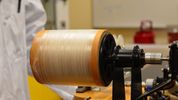Green automotive parts are pivotal in steering the automotive industry towards sustainability. These parts are crafted from recycled materials, produced using energy-efficient methods, or designed to diminish emissions and waste. They include innovations like recyclable metals and plastics, biodegradable composites, and more efficient systems such as LED lighting and advanced battery technologies for electric vehicles. The widespread adoption of these components significantly reduces the environmental impact of vehicle manufacturing and waste, offering substantial benefits in terms of reduced greenhouse gas emissions and lower toxicity in materials used and disposed of.
Despite their advantages, the adoption of green automotive parts faces challenges, including higher initial costs and concerns about the durability of eco-friendly materials compared to traditional alternatives. However, as technology advances and environmental regulations become stricter, the adoption of green parts is likely to increase. For a sustainable future, it is crucial that automakers, regulators, and consumers collaborate to support the development and integration of green automotive parts, ensuring that the vehicles of tomorrow are environmentally responsible and economically viable.
“Remanufacturing breathes new life into used vehicle parts, extending their lifecycle and promoting sustainability. Embracing circular economy practices such as automotive component remanufacturing minimises waste, fosters job creation and drives sustainable development,” explains Serfontein.
 unknownx500
unknownx500
















